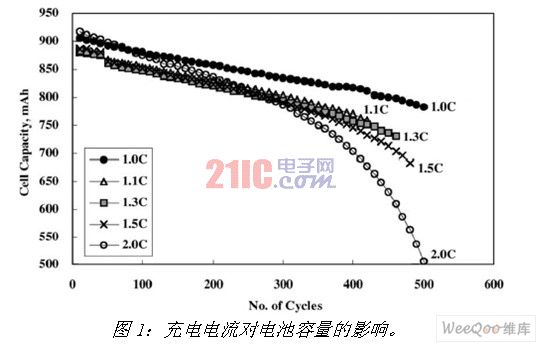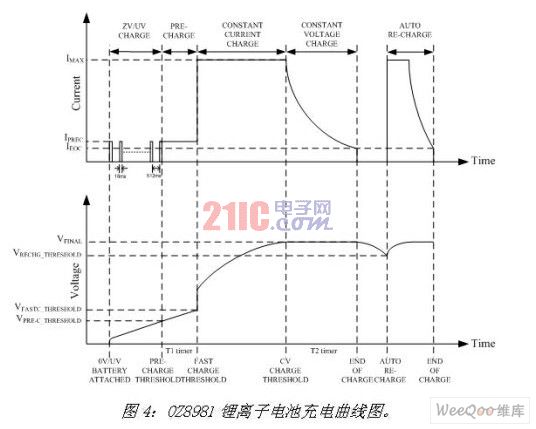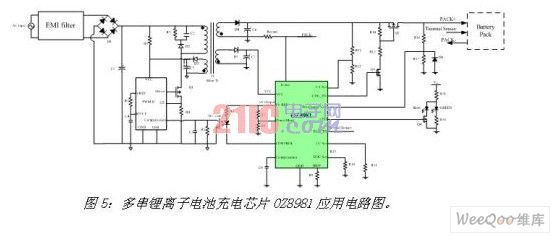Lithium-ion batteries have completely replaced other batteries in the mobile phone and notebook computer market due to their high energy density, small size and light weight, and their occupancy rate has almost reached 100%. At present, lithium-ion batteries are rapidly expanding into power tools and other applications, and its broad market prospects are increasingly recognized by the industry. However, compared with nickel-metal hydride, nickel-cadmium, and lead-acid batteries, it is necessary to continuously promote the application and development of lithium-ion batteries, and must continue to improve its safety and service life. This article will discuss a new charging solution from the perspective of the charger to improve the safety of lithium-ion batteries, extend battery life, and reduce the cost of the charger.
In the process of using the battery, we often hear the battery industry say: "The battery is less badly used, and more is being burnt." This sentence we can understand that incorrect charging conditions or methods will be more likely to damage the battery and reduce the battery life. Taking 18650 cobalt acid lithium ion battery as an example, when charging is over temperature, at 70 °C: electrolyte interface (SEI) mode begins to decompose and heat; 120 °C or so: electrolyte, positive electrode begins to thermally decompose, causing gassing and rapid temperature rise At around 260 ° C: the battery exploded. Or charging overpressure, in the case of overpressure 5.5V, it is easy to precipitate lithium metal, the solvent is oxidized, the temperature rises, a vicious cycle occurs, and even the battery catches fire and explodes. Therefore, for how to charge, we will discuss the following important issues together.
Why do I need a precharge function?
The battery operating voltage is from 2.5V (carbon negative battery: 3V, power is 0%) to 4.2V (power is 100%). When the voltage is less than 2.5V, the battery discharge is terminated. At the same time, the current loss of the internal protection circuit is also minimized because the discharge loop is closed. Of course, in practical applications, due to different internal materials, the discharge termination voltage can be in the range of 2.5V-3.0V. When the voltage exceeds 4.2V, the charging circuit is terminated to protect the battery safety; when the operating voltage of the single battery drops below 3.0V, we can consider the over-discharge state and terminate the discharge circuit to protect the battery. Therefore, when the battery is not in use, the battery should be charged 20% of the battery, and then stored in moisture.
Since the lithium ion battery has a high energy ratio, it is necessary to strictly avoid overcharging and overdischarging in the use of the battery. Over-discharge can cause difficulty in recovery of active substances. At this time, if you directly enter the rapid power-on mode (high current), it will cause damage to the battery, affecting the service life and may cause safety hazards. It is necessary to charge a small current (C/10) to 2.5V to 3.0V and then convert it to a fast charge.
Although the current lithium-ion battery has a protective plate in the application, under normal circumstances, the probability of over-discharge will be small, but without pre-charging function, in both cases, it may bring over-discharge. Hidden dangers. One is the failure of the protection board, and the other is the self-discharge rate of long-term placement (5%-10%/month). Therefore, the small current precharge can effectively solve the charging problem of the overdischarge battery.
However, the charging current is not as large as possible. Taking a single-cell lithium-ion battery as an example, its charging method includes a constant current and constant voltage charging process. The constant voltage is usually 4.2V (taking LiCoO2 battery as an example), and the constant current setting is 0.1C to 1C. Although charging with a large current will shorten the charging time, it will also shorten the battery life cycle and reduce the capacity, so we need to select the appropriate constant current value for charging.
The following is a graph of the relationship between different current charging and battery capacity of a 4.2V/900mAH LiCoO2 battery. (Figure 1), we can see that after about 500 charging and discharging cycles, the battery capacity of small current charging is significantly larger than that of high current charging. capacity.

Voltage accuracy requirements for constant voltage charging
As a high-energy-density battery, overcharging can cause great harm to lithium-ion batteries, and it may explode or even explode. Moreover, overcharging easily causes the electrolytic material inside the battery to accelerate the reaction and the battery life is shortened. Therefore, accurate constant voltage charging has an important significance for the service life of the lithium ion battery.
In order to fully charge fully, it is necessary to ensure that the accuracy of the constant voltage value and the termination voltage value are within 1%. Taking a lithium cobalt oxide battery as an example, it is better to be as close as possible to 4.2V, but not more than 4.2V. This high-precision voltage charging method can reduce the dissolution of cobalt and stabilize the layered structure of LiCoO2, making it The coating does not undergo a phase change, improves cycle performance, and maintains high capacity. In addition, even a slight overpressure can cause two phenomena to change, the initial battery capacity is reduced and the battery cycle life is reduced.
In the case of a multi-cell lithium-ion battery connected in series, in order to ensure the maximum battery capacity and life, it is sometimes required to achieve an accuracy of less than 0.5%. Therefore, the accuracy of controlling the charging voltage is a key technology of the lithium ion battery charger.
At present, people have such a misunderstanding about the charging voltage of lithium batteries. It is considered that with the battery protection board, it is not necessary to care about the voltage accuracy, which is not desirable. Because the battery protection board is designed to protect against possible accidents in a timely manner, it considers safety factors rather than performance factors. For example, taking a 4.2V battery as an example, the overvoltage protection parameter of the protection board is 4.30V (some may require 4.4V). If the battery is overcharged every time, the battery capacity will be very high with 4.30V as the charging cutoff point. Fast decaying.
Why do I need a charging timer?
There was a charger manufacturer who said that they used to contact the charger user to return the product, saying that the charger was broken. The reason was that the battery was charged for one day, the battery was not fully charged, and the charger did not turn the light. It was always a red light. When the manufacturer actually measures the charger, it finds that it is normal and meets the factory requirements. What is the problem? This is mainly because the charger does not take into account the self-discharge of the battery after aging. If the current setting of the off-charge is too small, the aging battery will not reach the set point of charging completion, which causes the user to misjudge that the charger is broken.
The role of the charge timer is to prevent the damaged or excessively circulated lithium battery. In the cut-off section of the charge, the self-discharge is too large, making it difficult for the battery to enter the EOC state (higher than the judgment current), on the one hand, bringing the user The battery is not full of misjudgment, on the other hand, it may also cause battery overheating to expand and even be dangerous due to excessive charging.
In view of these factors, O2Micro's new multi-string lithium-ion battery charging chip OZ8981 is a complete solution. The OZ8981 is a dedicated charge management integrated chip with precision voltage, current output and multiple protection, and a six-stage charge control mode for easy system design and low cost. It is targeted at multi-cell lithium-ion battery packs for light electric vehicles, electric bicycles and power tools.
The cost-effective and reliable OZ8981 includes a single-chip integrated charge controller for efficient error amplifier output. It supports 0V pulse charging, pre-charging, constant current charging, constant voltage charging, cut-off charging, and automatic recharging six-stage intelligent charging control. Supports flexible setting of pre-charge start voltage, constant current charge value, constant voltage charge value and cut-off charge current value.
In addition, the OZ8981 has a high precision charging voltage (<1%) and current (<5%) output; through external resistor adjustment, the voltage output accuracy can be <0.5%. Support dual charge timer protection: pre-charge timing, constant voltage charging timing (maximum 5 hours, or not used). Supports dual temperature protection: internal temperature protection (115 °C), external over-temperature protection (default: 44 °C) and over-temperature protection (default: 2 °C). The external temperature protection point can be flexibly set externally. Supports charging overvoltage protection, overcurrent protection, and short circuit protection. Support battery automatic access detection, support direct LED display of charging status. The device is available in a general package SOP16.

Figure 4 shows the charging curve of the OZ8981 lithium-ion battery. Combined with the front-end PWM chip, the OZ8981 will help users quickly realize a safe, efficient and low-cost lithium-ion battery charger design.

Nuts
Channel Spring Nut,Spring Nut,Channel Nut
Self Tapping Screw,Bolts,Nuts,Screws Co., Ltd. , http://www.nsnuts.com